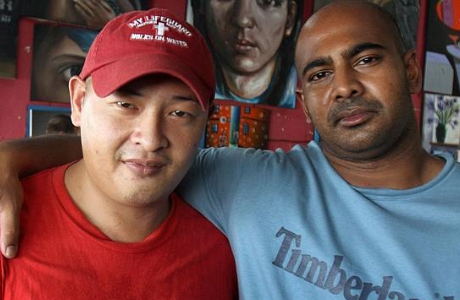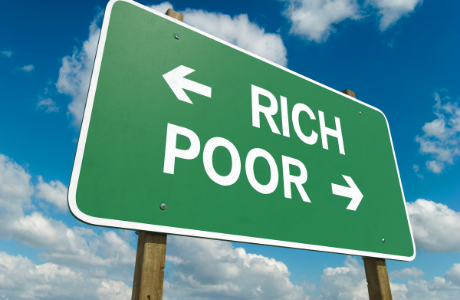I had an interesting conversation with some friends last week during which one of them shared about a Christian gathering they’d attended. I was aware of the meeting, but was unable to go so I asked how it went. My friends told about the guest speaker, a conservative evangelical American guy, whom I’d heard at a conference the week before. (When I refer to him as a conservative evangelical I’m referring to his faith not his fee. Apparently he speaks for $US23,000); to quote Kylie Minogue, “I should be so lucky.”
My friends mentioned that during his speech the presenter stated he believed “the Church has lost its voice”. I thought it was an interesting statement – as well as a huge judgement call – so I asked what he meant. Apparently it boiled down to two ethical issues on which, in the speaker’s opinion, the Church has not been vocal enough – abortion and same-sex marriage.
It’s important to understand the speaker’s cultural and religious background at this point. To a conservative, evangelical from the United States these are the two most important ethical issues. This guy had made similar comments at the conference I attended the previous week. He called them the biggest “hot button” issues of our time. It struck me how little research he had done into the culture of Australia in general and specifically into the Australian church. He brought his own cultural baggage with him and then proceeded to lecture us on our failings.
Let’s pause a moment and consider what it means to “lose your voice”. We’re coming into the colder months here in Melbourne, a time when people tend to succumb to all sorts of ills and chills that can include laryngitis – inflammation of the larynx, typically resulting in huskiness or loss of the voice. I’ve had it a few times and, for a preacher and a radio announcer, it’s never good! When you lose your voice you can’t speak, or you speak in a whisper that’s hard to hear. That’s the inference in the statement, “the Church has lost its voice”. We’ve either failed to speak or not spoken loudly enough. People haven’t heard the church speak enough on these issues (abortion and same-sex marriage) and we have thus failed in our mission.
The speaker’s premise is flawed for a few reasons. Firstly, I think the church in Australia has, by and large, made its point very clear on these two issues. I’ve read plenty of blogs, heard sermons and watched media reports on the church’s stance on these things. If you were to ask the average Aussie what the church believed on these two ethical issues I don’t doubt that they would have a very clear answer – we’re against both!
Secondly, I call into question the choice of just two ethical issues as the “hot-button” issues of our time. I don’t doubt the relevance and importance of the matters the speaker mentioned. I just question his narrow perspective. Considering the emphasis in the Bible, I believe the most important issue for Christians is addressing the causes and relief of poverty. This is mentioned over 2000 times in Scripture. In Jesus’ teachings he emphasised the “Law of Love” – love of God, love of self, love of neighbour and love of enemies. He particularly applied this to helping the disadvantaged – those in need of the basic necessities of life (food, drink, shelter, clothing and company – especially for those who are sick and in prison). The church has not lost its voice on these issues and neither should it. We need to keep speaking out for (and working towards) justice on behalf of the poor, the widows and orphans, the asylum seekers, the homeless, the abused, as well as those living with disability or mental illness. Let’s not lose our voice on these things.
Thirdly, it’s vital that in speaking out on ethical issues the Church doesn’t lose its voice on its core message. After all, God so loved the world that He didn’t send a committee – or a political lobby group – He sent His Son so that “whoever believes in him shall not perish but have eternal life.” The core message of the church is a message of grace, forgiveness and reconciliation with a God who loves people.
One of the most impacting books I’ve read this year is Philip Yancey’s Vanishing Grace in which he offers some sage advice for Christians and churches that desire to speak into culture. Yancey warns that the church risks “losing its central message” if it tries to Christianise any nation. He says, “When the church accepts as its main goal the reform of the broader culture, we risk obscuring the gospel of grace and becoming one more power-broker. That is how many in the secular world view us now, as a right-wing conspiracy intent on passing laws against them. In the process, they miss the good news of the gospel, that Christ died to save sinners, to free us from guilt and shame so that we can thrive in the way God intended.”
In his second letter to the Corinthians the apostle Paul made it clear that the church’s core message and ministry has to do with reconciliation: “God was reconciling the world to himself in Christ, not counting people’s sins against them.” The church loses its voice when it spends an inordinate amount of time moralising – literally counting people’s sins against them – when God did not send His Son for such a purpose. Our core message has to be Jesus’ message – the Son of God who had a particularly soft spot for sinners. Remember, “God did not send his Son into the world to condemn the world, but to save the world through him.” So Church, Christians, let’s not lose our voice!






